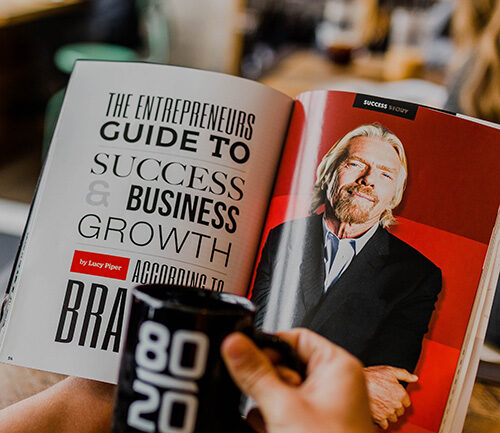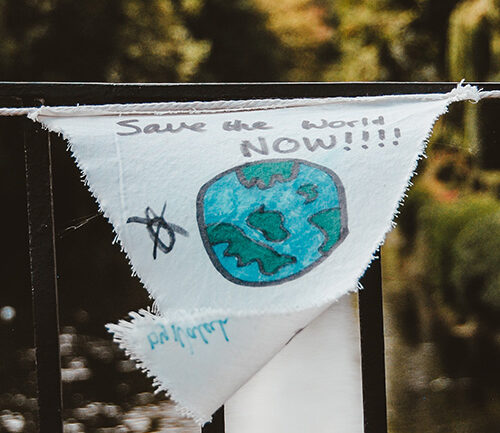Recent Comments

To err is human, to approach marketing with design thinking is human-centric.
We’re pretty sure nobody ever said that, but it’s all true.
Design thinking is the process of seeking to understand your audience, questioning everything, unearthing problems, and innovating solutions that can be modeled and tested. This creative process is designed to reveal opportunities and develop strategies you may not have seen before.
Design thinking is a way to understand and develop empathy for the people who will use your products and services. It also applies to the various tools and channels you use to market these products and services to them.
Deep diving into your audience’s thoughts and behaviors allows you to think through the problems they are trying to solve with your products and services, remove any assumptions you’ve previously made and clarify any misperceptions you were working with.
All of this is done through exploration, experimentation, and prototyping before documenting and implementing your final solution.
How does this apply to your brand?
 Your brand is the way you want your audience to see you. It’s your company culture. At the bare minimum, your brand is your visual identity – logo, color standard, fonts, etc. – combined with the way you want your audience to feel about you – your tone, vision, and values. By seeking to understand and empathize with your audience, you can apply their fears, desires, wants, and needs to the messages your brand sends out.
Your brand is the way you want your audience to see you. It’s your company culture. At the bare minimum, your brand is your visual identity – logo, color standard, fonts, etc. – combined with the way you want your audience to feel about you – your tone, vision, and values. By seeking to understand and empathize with your audience, you can apply their fears, desires, wants, and needs to the messages your brand sends out.
People use any means they can to express their identity – it’s personal and they want the world to know it. As should your brand.
By associating their personal identity with your brand, they are choosing to show themselves and the world who they are. They define themselves by the brands that fit into the lifestyle they aspire to and the status associated with it.
Staying relevant through design thinking
 As markets change, brands need to keep up. That doesn’t mean changing your logo and your color scheme. It means following what matters to your audience and tweaking your messaging to reflect those changes that keep you connected.
As markets change, brands need to keep up. That doesn’t mean changing your logo and your color scheme. It means following what matters to your audience and tweaking your messaging to reflect those changes that keep you connected.
Corporate social responsibility is a great example of how companies stay relevant and respond to social issues. Case in point: Patagonia, a brand always known for embracing sustainability and organic materials and even advertised for people to not buy their products on Black Friday due to the owner Yvon Chouinard’s, inherent dislike of extreme capitalism, recently upped its CSR game.
While the company has always given money away to grassroots environmental activism since its inception, Chouinard and his family transferred their ownership of Patagonia, valued at over $1B into a trust designed to combat climate change and protect undeveloped lands across the globe.
In an interview with the New York Times, lawyers for the family said as a team, they and the Chouinard family explored many options and ideas that challenged current market practices, acknowledged their customers’ attitudes toward climate change, addressed the family’s own concerns about the growing climate crisis and the question of what to do with the company – and the money – when Chouinard passed away.
One can imagine that through design thinking on a daylong retreat in the mountains above Ventura, California, this unconventional new business model was born. And Patagonia’s brand has been elevated in its market by applying the principles of design thinking to some sticky problems.
What does your brand say about you?
Your brand is an extension of your company culture. Remember that your brand carries influence with your users, and your users will embrace or reject your company if your brand does not align with their values.
A brand is the sum of everything about your company. Not just the logo, fonts, color palette, and design elements, but how you do business, and how you treat your clients, employees, and your community. Your brand is an extension of who and what you are. The visual representation of your brand is usually your first opportunity to introduce yourself to potential clients. Make it count because your clients determine what your brand means.
Author: Kathie Taylor, APR | IPSM
Notes: Photo credits to @uxindeo, @austindistel, and @helloimnik
Reference articles: https://www.nytimes.com/2022/09/14/climate/patagonia-climate-philanthropy-chouinard.html


Comments are closed.